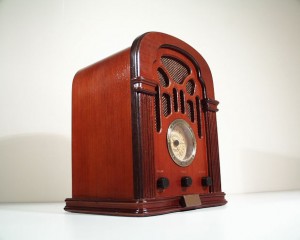We’d like to think that our modern medical technology and treatment methods can diagnose and heal any problem. PET scans, CAT scans, MRIs and X-Rays allow us to peer inside the body and examine tissues and organs. Our MDs and surgeons are the beneficiaries of hundreds of years of evolving medical education. But guess what! Not every ache and pain has an obvious cause and many docs are as mystified by our ailments as we are.
New Study Finds 70 Percent of Able-Bodied Hockey Players Have Abnormal Hip and Pelvis MRIs comes from Science Daily. The piece explains the findings of a study conducted by the American Orthopedic Society for Sports Medicine. The study used the MRIs of the pelvis and hips of 39 collegiate and professional hockey players. Seventy percent of the images showed abnormalities yet only two players reported pain. In other words, most of the players had what we might identify as “injuries” yet only two of them were “hurt.” So this goes to the issue of just how valuable are these sorts of diagnostic tools.
Matthew Silvis, MD, Assistant Professor, Department of Family Medicine and Orthopedics at Hershey Medical Center at Penn State University College of Medicine stated,
“Unexpectedly, the majority of players had some abnormality in their MRI, but it didn’t limit their playing ability. The study raises many questions, but its value to surgeons is to recognize that imaging doesn’t replace good clinical judgment, which includes a detailed history and complete physical exam. This study might make you hesitate to read too much into an MRI.”
A lot of us probably assume the MRI is very precise and can show us exactly why our back, knee or shoulder is in pain. Yet we may need to think about whether or not we’re looking at chickens or eggs here. Do these abnormalities cause pain, or are they simply coincidental to pain?
Obviously the only reason anyone gets an MRI outside of a study like this is because we’re in pain and we need to know why. (I have yet to meet anyone who had an MRI simply out of curiosity about what they look like on the inside.) So automatically we have a self-selected group to study. If this study is any indication then in fact it’s entirely likely that people who feel healthy may indeed appear to be injured according to their MRI. Thus what is seen on an MRI and attributed to our pain–bone spurs, a torn labrum, or a herniated disks for instance–may or may not be the cause of our pain. Perhaps the source of our pain is something else entirely. The point is the MRI is not always as precise as we’d like to believe.
I’ve had personal experience with this sort of situation. Several years ago I was performing a barbell snatch and I felt a pop followed by very sharp pain in my left shoulder. A cortisone shot helped only temporarily. I underwent an MRI and according to the image there was no serious injury. It wasn’t until a surgeon had a look inside my shoulder and saw that my supraspinatus tendon was about 90% detached. After he reattached the tendon he later explained how MRIs can be helpful but they’re not always very precise.
On a simiar theme, a recent New York Times story examines to what degree doctors sought medical attention for their aches and pains. You might be surprised to learn that docs who were interviewed rarely visted other docs when they’re hurting. (The Times story also references the MRI story mentioned above.) Doctor-athlete, Paul D. Thompson, a marathon runner and a cardiologist at Hartford Hospital in Hartford said the following:
“I think most folks should not go, because most general doctors don’t know a lot about running injuries,” he said, adding, “Most docs, often even the good sports docs, then will just tell you to stop running anyway, so the first thing is to stop running yourself.”
So all-and-all, as much as we’d love to believe that the modern mainstream medical profession has all the answers–or at least the tools to find all the answers, it simply ain’t so in a lot of cases. The fact of the matter is most MDs don’t fully understand human movement and how all the parts of the body–bones, muscles, organs, and most importantly the nervous system–act together in a 3-D world governed by gravity. Just look at how many specialists there are around us. There are podiatrists for the feet, spine specialists, knee specialists, shoulder specialists, low-back doctors, etc. There are surgeons that specialize in opening us up and tinkering about. There are docs to analyze blood, the eyes, reproductive organs, the heart, our minds…. But guess what, we’re all one big system! If we or the people who are assessing us believe that we’re just a bunch of separate parts then we’re way off the mark. And if your doc just wants to feed you pain medicine–definitely go get another opinion. (As one acquaintance put it, “Your pain wasn’t caused by an ibuprofen deficiency.”)
(BTW, please don’t take this as my hating on the entire medical profession. If I’m in a car crash and I’ve got a piece of steel stuck in me, please go get me a surgeon and not a massage therapist or chiro.)
Recognize that the arms and neck are highly affected by the feet. Weak eye muscles can cause bad posture and thus neck pain. Medication for our high cholesterol may cause low-back pain. Shoulder pain may be rooted in poor wrist and hand mechanics. Even if the tissue of a years-old injury has healed, the ability to move and control the limb may not have been restored–and that may be causing pain in any number of areas. The bad mood you’re in may be driving that aggravating hip pain.
The body and the nervous system is tremendously complex and all its parts are highly interactive at all times. Always keep this in mind if you’re in pain and looking for relief.


